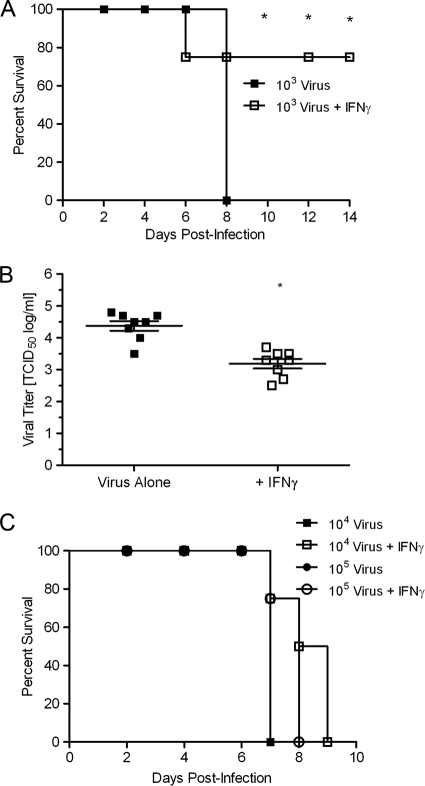Fig. 5.
Exogenous IFN-γ can protect mice from H5N1 virus infection depending on the initial viral dose. (A) Beginning 24 h after infection with 103 TCID50 (1 MLD50) HK/483 influenza virus, C57BL/6 mice were administered PBS (virus, n = 13 mice) or recombinant IFN-γ (virus + IFN-γ, n = 13) daily for 4 days; mice were then monitored for morbidity for 14 dpi. (B) At 5 dpi, lungs were isolated from 4 mice per group and viral titers were determined by TCID50 analysis. (C) Following the same IFN-γ treatment regimen described above, C57BL/6 mice were infected with 104 (n = 10) or 105 (n = 10) TCID50 HK/483 influenza virus and then monitored for morbidity for 10 dpi. Results from 2 independent experiments are shown. Error bars represent SEM, and asterisks represent statistical significance at P values given in the text. Each point in panel B represents an individual mouse.

